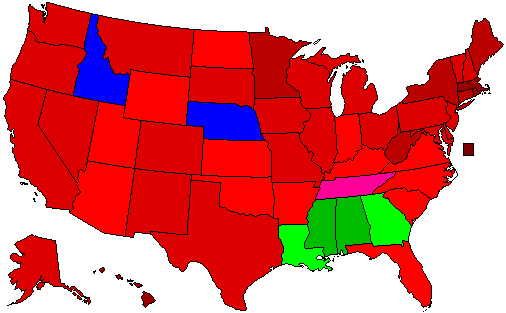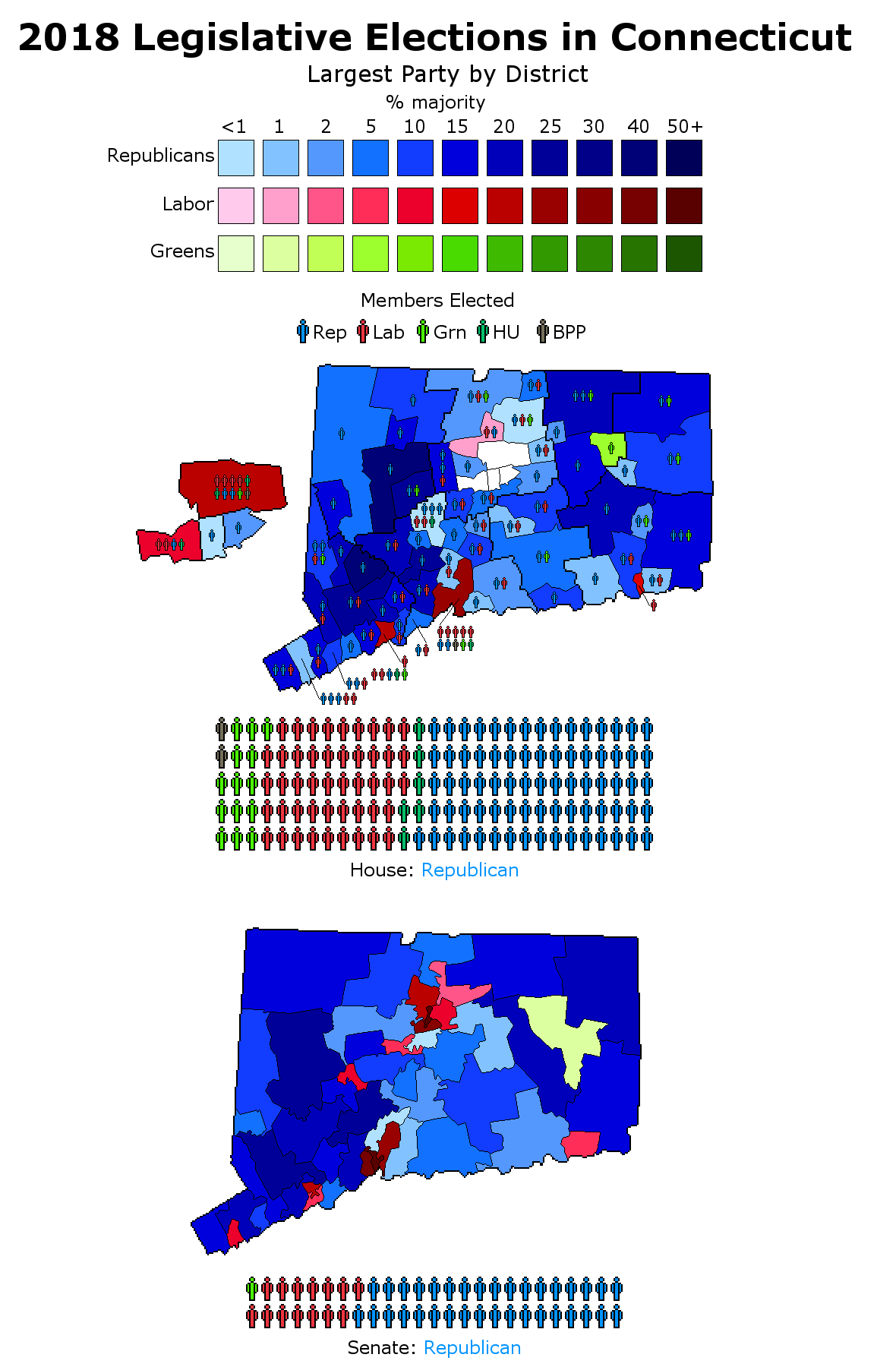The Elephant & The Bull Moose: 1988
1992
Like his predecessor, things started out well for Kean. His first year saw considerable political upheaval abroad, as Poland held semi-democratic elections, he led international condemnation against China after opening fire on protesters criticizing the Communist government and calling for freedom of speech and democracy, and the fall of the Berlin Wall signalled the beginning of the reunification of Germany. Kean made sure to be seen in the international press supporting Solidarity, the Tienanmen Square protesters and DDR President Krenz in order to garner credibility as the 'champion of democracy', an image which helped keep his popularity high with the general public at first.
Despite this, electorally the Republicans were suffering. When Dick Cheney was appointed to the Cabinet, the Republicans unexpectedly lost Wyoming's at-large congressional district, and the Republicans just barely held the Virginia governorship and lost Kean's old governorship in New Jersey. The 1990 midterms proved fairly poor for them too, although they were not exactly a walkover for the Democrats, who managed to recapture the House but could not do the same in the Senate or make a net gain of Governorships. Kean's advisors argued that his moderate politics was not endearing him to the Republican rank-and-file and Democrats weren't rushing out to switch to him either, but in early 1991 something came along that revived his fortunes significantly.
In November 1990, after three months of tension, the UN authorized 'all necessary force' to end the occupation of Kuwait by Saddam Hussein's Iraqi regime, and through an international coalition led by the US known as Operation Desert Storm, the two-month war ended with the liberation of Kuwait on the 27th February. But Kean wasn't quite finished; quietly, over the course of 1991, he took measures to deploy limited US taskforces to Iraq to overthrow Saddam's regime and destroy the military bases of al-Qaeda, killing several senior operatives of the terrorist group, including Osama bin Laden. The assurance Saddam was out of power and America had neutralized Iraqi terrorism was very reassuring to voters, especially when with the final dissolution of the Soviet Union and the end of the Cold War came towards the end of the year.
Going into 1992, Kean looked certain to win re-election; satirists abounded with jokes about how the Democratic nomination was 'the competition to lose to Kean again', and most of the contenders for the nomination were B-listers like Massachusetts Senator John Kerry, former Governor of California Jerry Brown, and Senator Tom Harkin of Iowa. Ultimately, though, the person to be nominated was one of the more notable names to run- Governor Ann Richards of Texas, whose mockery of Kean at the 1988 Democratic National Convention (ineffective as it was) had given her some notable publicity and who managed to stand out as one of the few genuinely enthusiastic campaigners of the Democratic primaries (although behind closed doors she expressed concerns it was something of a futile task), and also had the positive upshot that she could be America's first female President if elected. On the back of this, she managed to take the nomination, and to provide a good regional balance she chose Kerry to be her running mate.
As the year progressed, though, Kean's sure-fire re-election campaign started to get rocky fast. First of all, the economic downturn that had started in late 1991 was not going away but getting worse, and the Democrats were able to hammer him on it, especially Richards, who played the old gambit of the Governor-turned-Presidential candidate and contrasted the President's running of the country to her running of her home state. But what made things still more interesting was when a third candidate entered the race- Texan billionaire Ross Perot, who ran on a platform aggressively opposed to the North Atlantic Free Trade Agreement (NAFTA) which Kean had been organizing with the Canadian and Mexican governments to establish a free-trade area between the three similar to the EEC in Europe. Perot raised populist objections about the potential job losses to Canada and Mexico that he claimed would befall America if the deal went ahead, and he started polling surprisingly strongly, especially after he chose former Senator from and Governor of California Pete Wilson, a critic of Kean and experienced Republican politician, as his running mate.
Unfortunately for Perot, he peaked too early, as by the autumn Richards had built up considerable momentum herself, and his pick of Wilson started to alienate some of his supporters due to tarnishing his anti-establishment credentials. The debates further reinforced Richards' lead, as while she put forward strategies for combating the recession and steered clear of NAFTA and immigration, Kean and Perot bickered fiercely over the issue, appearing childish to most voters. The only real blow to Richards' chances was when Jerry Brown endorsed Perot, although this turned opinion within the Democratic Party away from Brown as much as it swayed anyone to Perot.
Richards/Kerry (Democratic): 388 EVs, 42.7%
Kean/Simpson (Republican): 133 EVs, 35.5%
Perot/Wilson (Independent): 17 EVs, 20.2%
As one might expect with the Republican vote so irrevocably split, Richards won a huge victory in the Electoral College and a more modest one in the popular vote. The vote splitting was most obvious west of the Mississippi, where every state except Nebraska and Richards' native Texas saw no candidate win over 40% of the vote and a few states unexpectedly went for Richards (most notably the traditionally ardently Republican Kansas), while the Democrats generally held steady in the South and outpaced Kean in most of the close states in the Midwest and northeast. On top of Richards' ascendance to the Presidency, the Democrats made gains in the House (helped by gerrymandering in the South, admittedly, but still) and finally retook the Senate.
As Richards assumed office, the national mood was still shaken by the recession, but optimism was in the air. A
New York Times editorial from January 1993 summed up the mood of the time, suggesting that maybe Francis Fukayama's theory that the world had entered 'the end of history' was accurate. America had a female President, democratic governments were replacing authoritarian ones across the world (except China and North Korea, but they don't count), and America was now the world's only superpower, a shining city on a hill where living standards were going to rise, people were going to keep getting happier and healthier, and the next generation would be the happiest and most peaceful in history.
Admittedly, that editorial's self-aggrandizing optimism has been oversold, but it would still go down in history as perhaps the worst-aging piece of journalism since the astrologer for the Sunday Express said Hitler wouldn't go to war because his horoscope said so.





